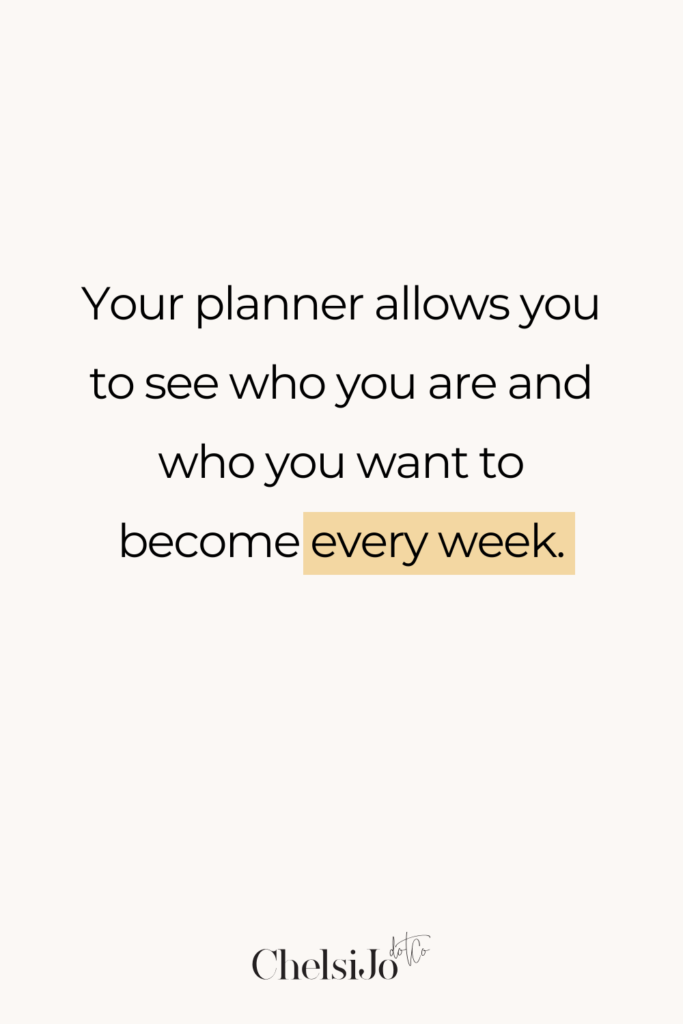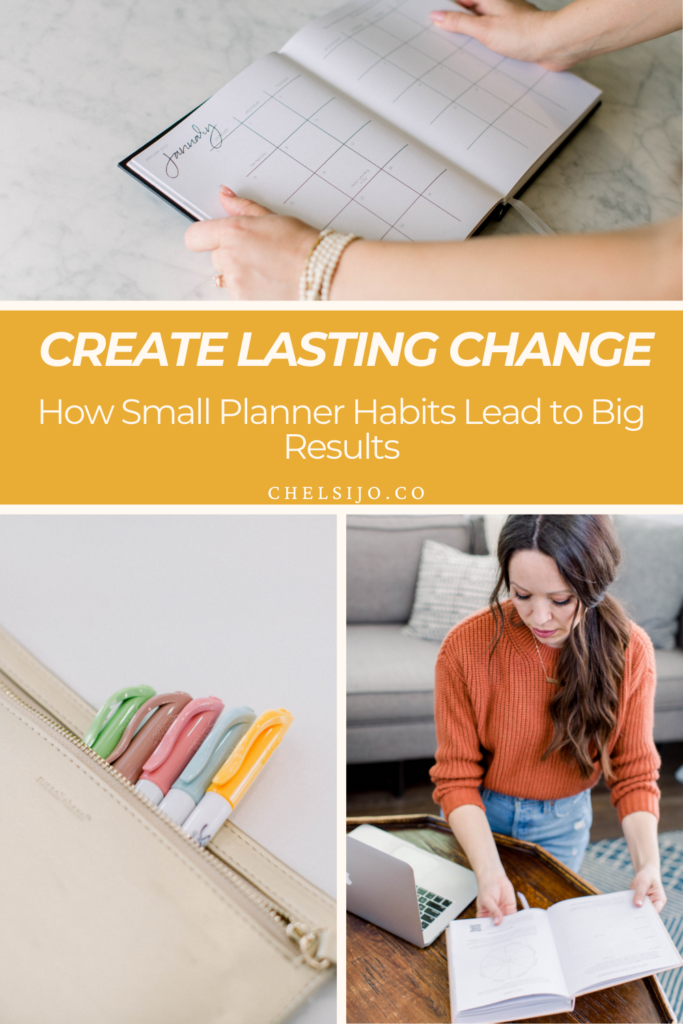Planning doesn’t have to feel overwhelming, and it’s about more than simply listing out tasks. Imagine a system that actually helps you manage life, reduce stress, and keep a sense of peace and control. That’s what using a paper planner can do for you! When you commit to using it intentionally, it becomes a tool that guides your days, helps you prioritize, and gives you clarity in the chaos.
Here’s the thing: using a planner is about setting yourself up to thrive, not just survive. And with my top five strategies, you’ll discover how a paper planner—yes, even the kind you can grab at your local store—can help you get grounded, stay organized, and connect with your goals like never before. I’m also sharing how I use the Dream Planner by Polly Payne, which I’m totally obsessed with, to streamline my life. You can grab yours today and get 20% off with code CHELSI20!
Ready to dive in? Let’s transform the way you use your planner with these five actionable tips!
Listen Below For The Entire Episode On The Systemize Your Life Podcast
Why Choose a Paper Planner?
In a digital world, there’s something uniquely powerful about putting pen to paper. Paper planners offer a tactile experience that helps reinforce focus and commitment, giving a clear, distraction-free overview of your priorities. Unlike digital devices, which can be full of notifications and potential interruptions, a paper planner is a dedicated space for your goals, thoughts, and reflections. Studies show that handwriting can improve memory and attention, making it easier to stay on track with your plans. If you’re considering a system to boost productivity and mindfulness, a paper planner can be a fantastic starting point.
Nothing is more precious than the time we are given and who we were created to be.
#1: Do a Weekly Brain Dump to Clear Mental Clutter
Nothing feels as freeing as a good brain dump! Once a week, sit down and jot down everything that’s swirling in your mind, from must-do tasks to random reminders. Having this all in one place creates clarity and gives your brain a much-needed rest. I know for me, this practice helps me see what’s important and what can be let go.
Quick Action: Take 5–10 minutes at the start of the week to brain dump everything into your planner. Sort your list into “urgent,” “important,” and “if there’s time” categories to keep it clear and manageable.
#2: Create Visual Time Blocks for Each Day
Visual time blocking is one of my favorite ways to structure my day. I use five blocks: one for myself, one for home, one for work, and then repeat for family and self-care. This system allows me to focus on each area of life without feeling like I’m juggling everything at once. Learn more about How To Put Time Blocks In Your Paper Planner + When To Use Your Google Calendar.
Quick Action: Write down these blocks in your planner for each day of the week. If you’re a weekend warrior or a “work-from-home” mom like me, these blocks are life-changing!
#3: Start a Weekly Gratitude Log
Gratitude has this beautiful way of shifting our mindset and lightening our load. In my Dream Planner, I jot down a few things I’m grateful for each week, and it truly helps me focus on the good rather than the stressors. This practice is simple but powerful for creating a positive mindset.
Quick Action: Dedicate a section of your planner to weekly gratitude. Even just listing two or three things each week can make a huge difference!

#4: Prioritize Your Core Goals Monthly
At the start of each month, spend a few minutes in your planner listing the top goals that align with your long-term vision. I use my planner to write down three key goals that I want to focus on. These don’t have to be big—they just need to be meaningful to you.
Quick Action: Choose three goals each month that feel significant. Keep these at the top of your monthly view for easy access, and check in on them each week to make sure you’re on track! I love using the blank space on the margins of my weekly spread to track these core goals.
Not sure what habits to even start? I’ve got you. Learn how to Avoid The Burnout with these 10 Habits Every Busy Mom Needs In Their Daily Routine.
Step #5: Engage in Weekly Self-Reflection and Data Collection
Each week, take time to reflect on your progress and collect data about your actions, emotions, and habits. Use your planner to record key insights: What tasks did you complete or not complete, and why? How did you feel during certain moments? What energized you or drained you? This process is about understanding yourself and identifying areas for growth. It’s not about judgment but learning from your patterns to adjust for the future. Remember, every week is a new opportunity to make different decisions and move closer to your goals with intention and clarity.
Quick Tip: Set aside 10 minutes at the end of each week to review your planner and jot down a few key insights. This simple habit can transform your productivity and mindset over time!

Empower Your Productivity This Year with Your Planner – Start Today!
If you’ve been using your planner just for lists and appointments, it’s time to level up! These five tips will help you harness the full power of a paper planner. And if you want a planner that combines functionality and beauty, grab the Dream Planner from Horatio Printing and use code CHELSI20 to get 20% off!
Let’s make this the year you finally get organized, find balance, and create a system that supports every area of your life. Start small, try one or two of these tips, and watch as your days become more peaceful and productive. Here’s to a more intentional, beautifully organized year!


Frequently Asked Questions
What’s the best way to keep up with gratitude journaling if I tend to forget?
A simple way to build the habit is to tie it to another routine—like writing down gratitude at the end of your daily planning. If you need help making gratitude a habit, read our post on Unlocking Balance: A Practical Guide to Crafting Your Morning Routine Block for more inspiration.
Can I use time blocking if my daily schedule is unpredictable?
Absolutely! Time blocking is flexible and works even for variable routines. Instead of rigid blocks, you can try blocking flexible periods in your day for personal, family, and work tasks. Learn more with my post on The 3 Things You Need To Start Time Blocking With My 5 Block Method And Make It Work!


